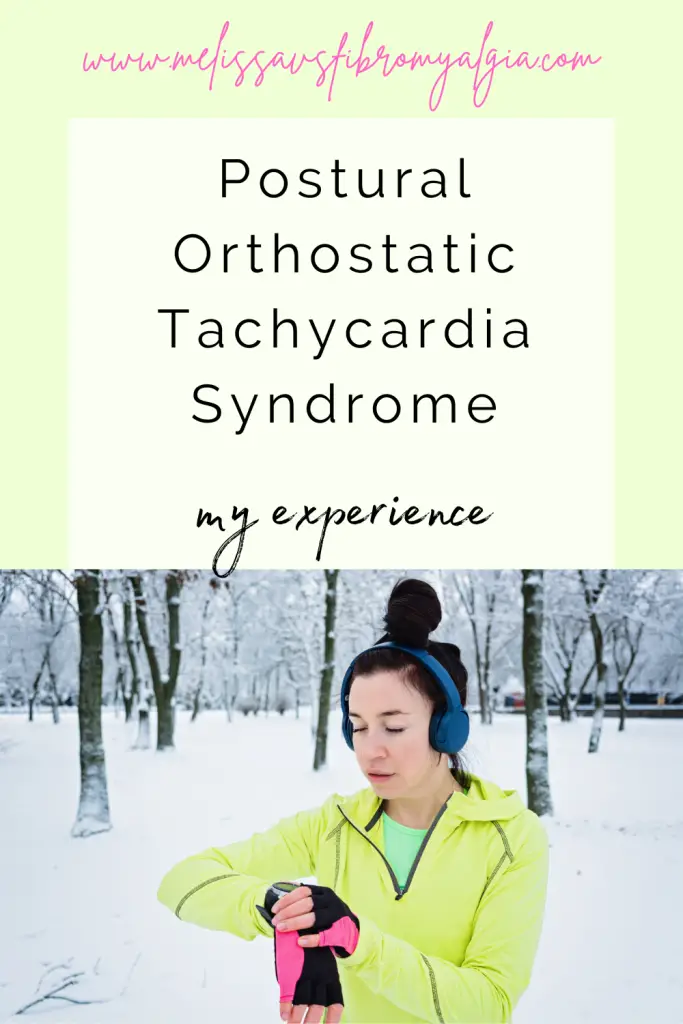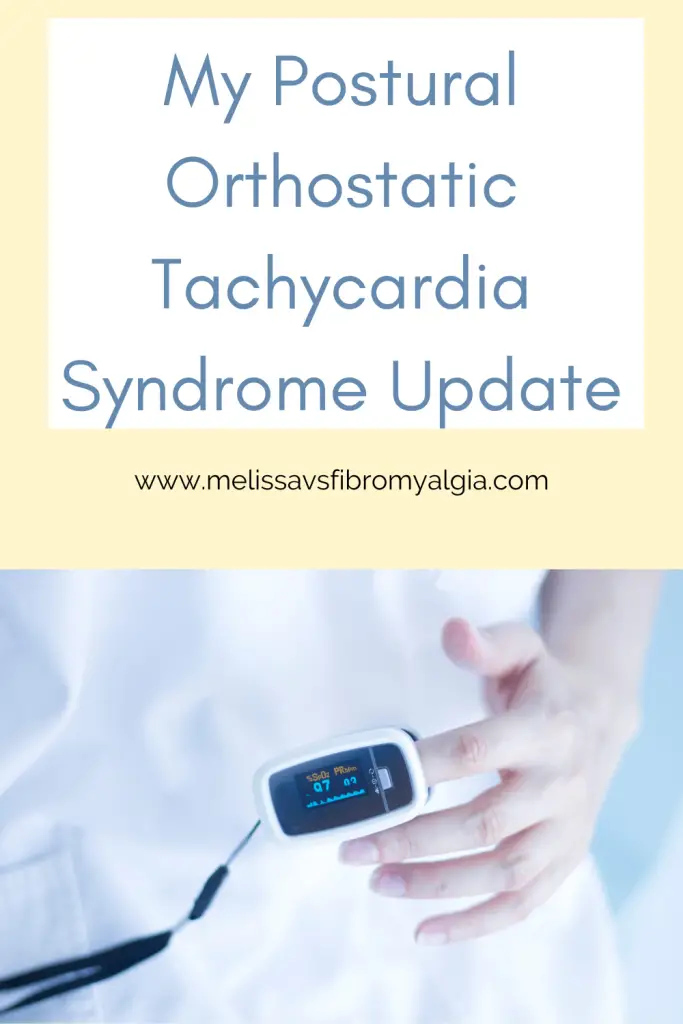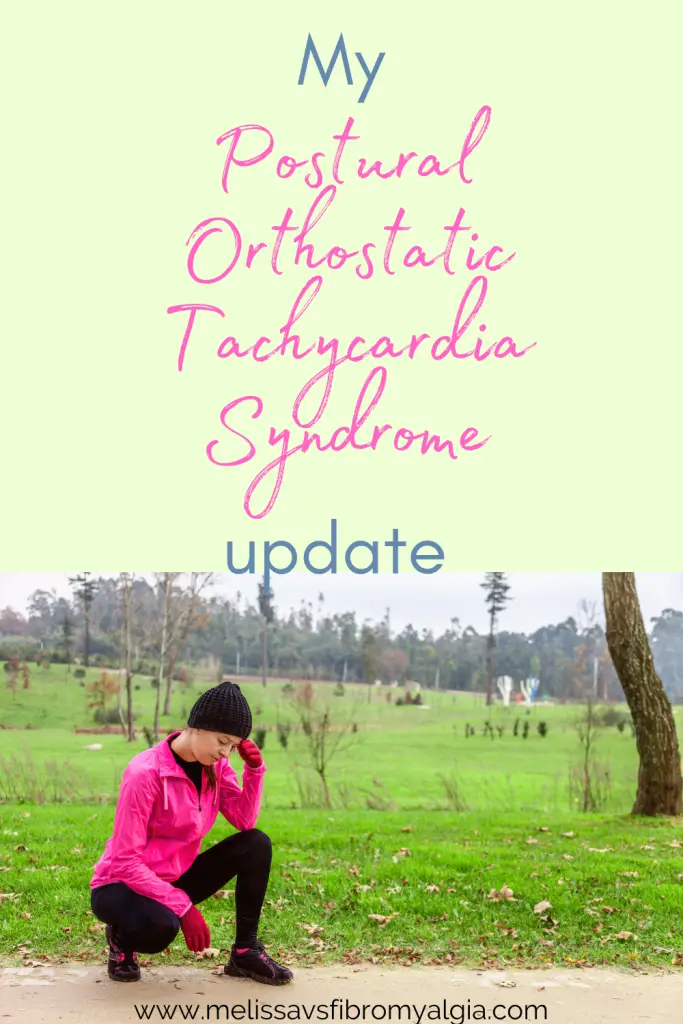Let’s talk about POTS for a moment: Postural Orthostatic Tachycardia Syndrome. It is a condition of the autonomic nervous system often occurring alongside fibromyalgia and myalgic encephalomyelitis/chronic fatigue syndrome.

In brief, it is a condition that causes the heart rate to rise dramatically upon standing. This causes many symptoms ranging from mild to severe. Light headedness, dizziness, fainting or near fainting, extreme fatigue and more. I will go into this in more detail in a post I’m creating about POTS for you.
My experience with Postural Orthostatic Tachycardia Syndrome
I’ve been experiencing the symptoms of this for some time, potentially since I had my post-viral fatigue onset at 21 years old (around 16 years ago). But it’s been buried beneath chronic insomnia, fatigue and pain. Unless it was an extreme episode, I didn’t pay attention.
After my second bout of Covid at the end of 2022, I experienced an extreme episode of dizziness and near fainting so bad that I had to stay reclined for an entire morning. It was a scary experience. But passed relatively quickly.
In August 2023, I went to the doctor and explained that the bouts of heart rate rising too high is much more frequent since my operation (nine weeks at that point). Read more about the endometriosis excision and hysterectomy here.
Early on (after the operation) it would raise really high, leaving me no choice but to recline. I’d feel nauseas and lethargic. As time went on it would make me feel shaky and breathless, but I could quietly continue as needed.
I’d notice my heart rate was 100 when driving the kids to school. My usual resting heart rate is around 68, a good day driving is 80. So its a regular 20 too high that’s impacting my fatigue levels.
The more scary part is the tightness in my chest and breathlessness that I experience. I’ve noticed when trying to film videos I get breathless easily. And my chest will get tight, even with my gentle, deep breathing.
I don’t know my heart rate is rising until I start to feel extra fatigued, shaky and breathless. Then I check my Fitbit. At this point I do what I can to mitigate (sit down, squeeze legs, deep breathing with a long, slow exhale). I’m not yet getting to a place of prevention or proactiveness, it’s very reactive as yet.

The Doctor and the Idea
We discussed my coping mechanisms – sitting down when dizzy, watching my heart rate, squeezing my legs, slowly increasing exercise, increasing salt and water. I take electrolytes.
My blood pressure was regular for me, the bottom of normal and unchanged on standing (ruling out orthostatic hypotension). However my heart rate went up around 22 beats from sitting to standing (official diagnosis requires 30 beats per minute). I was obviously pale. I’ve also been more cold than usual since the operation, so I don’t know if this has bearing.
My doctor explained that they are seeing POTS with long Covid. I feel that I’ve likely had it since my post viral fatigue set in after my precipitating virus at 21. After focusing on the insomnia and pain for so long I just couldn’t notice the heart rate rising.
She looked up medications and found fludrocortisone. Its a medicine that can increase blood pressure which can help POTS. My blood pressure is the bottom of normal so this could help. More details on this medicine in the resources below.
My due diligence
I’ve looked up the information online about this medicine, potential benefits and side effects. And discussed it with the pharmacist in more detail. The main side effects include more fatigue, water retention, headaches and worsened symptoms. See the articles at the bottom of this article for more detail.
The potential benefits are that it could help the fatigue and blood pressure. Reducing the episodes of heart rate rising too much. However the chances are not high, its more likely to work in younger people (under 25). But if it does work, its likely to in combination with added water and sodium intake. Also potassium as it depletes potassium.
I’ve put the medicine on pause as I’m not yet convinced the cost vs benefits add up.

Things I’ve noticed as I’ve been learning
One, I’m having more and different types of headaches with the heart rate issue being worse.
Two, even just a 20 beat per minute increase has a big impact on the fatigue.
Its strange because despite this, I’m mostly sleeping well. Most nights I attain normal levels of deep and REM sleep and 7-8 hours of sleep. Despite this I’m experiencing higher levels of fatigue.
The mornings have been quite difficult. Once I get going I can do what I need with the children. I feel best after a good yoga Nidra meditation in the early afternoon. After this I have what I call electrolyte tea – electrolyte powder in warm water. I’m feeling pretty good until about 8pm as long as I’m pacing (sit down between activities).
After 8, if I can sit on the couch, slightly reclined with my heat pack its ok. And if I get into bed before things have escalated too much I generally feel ok. If I go to bed a little late, it takes some time to feel ok and able to go to sleep. Headache, neck pain and wired kind of tired.
The difficulty is that many POTS symptoms overlap with fibromyalgia and chronic fatigue syndrome. POTS is often comorbid with CFS. So who knows if I’ll ever understand what it is that I actually have. At this point I believe my autonomic nervous system is the issue, but I don’t know why.
All I know is that it’s having a dramatic impact on my life and I need to work on it. Which is disappointing because I had really hoped to experience improvement post operation. All that inflammation, the endometriosis lesions and no heavy, severely painful periods should make my body feel A-mazing. And I do feel thankful at all times that that is done. I just wish new issues would stop coming up!
I’ll update you as I have more.
Some resources for you and from which I drew for my own research
Fludrocortisone and CFS https://sacfs.asn.au/news/2010/07/07_29_fludrocortisone_for_cfs.htm
Information about LDN and POTS https://www.cureus.com/articles/176869-low-dose-naltrexone-use-in-postural-orthostatic-tachycardia-syndrome-a-case-series#!/
Information about POTS https://www.hopkinsmedicine.org/health/conditions-and-diseases/postural-orthostatic-tachycardia-syndrome-pots
